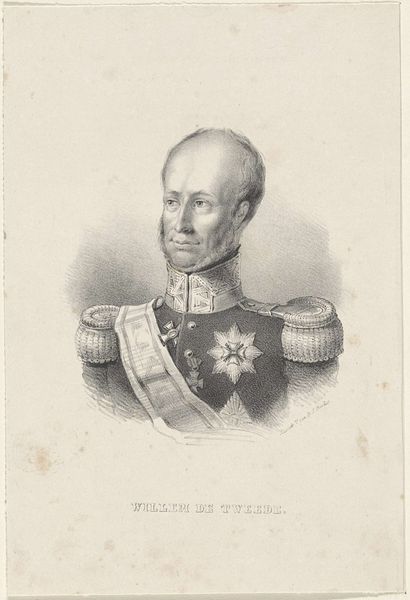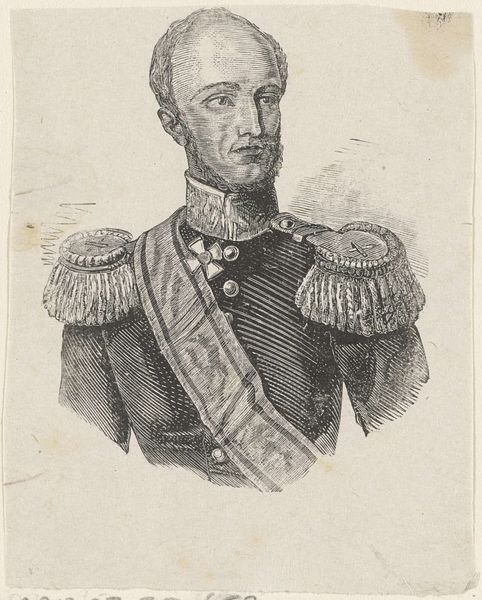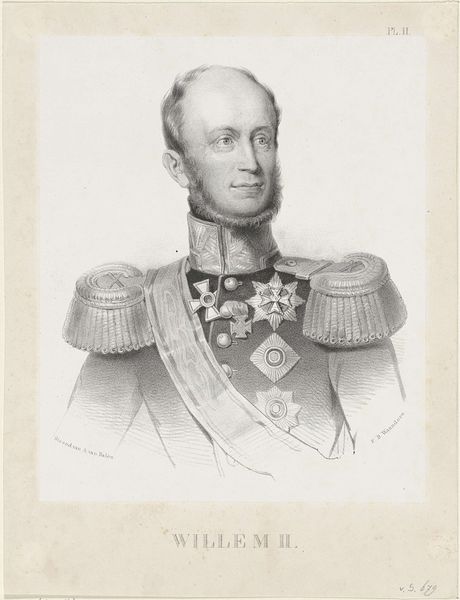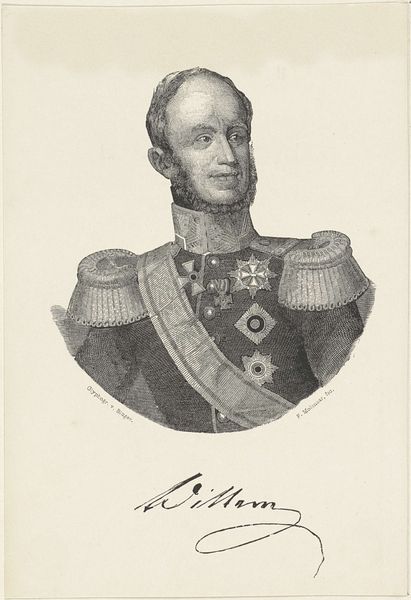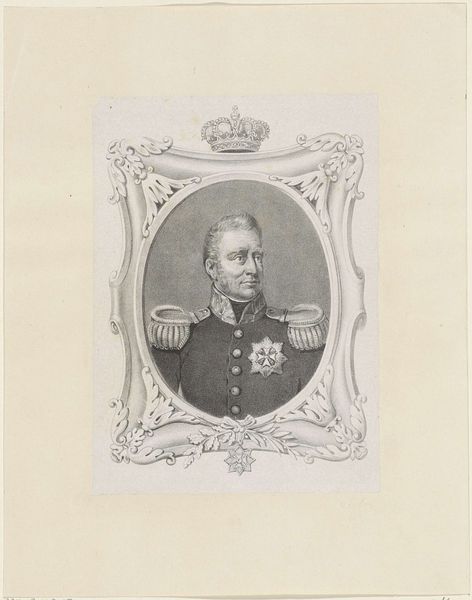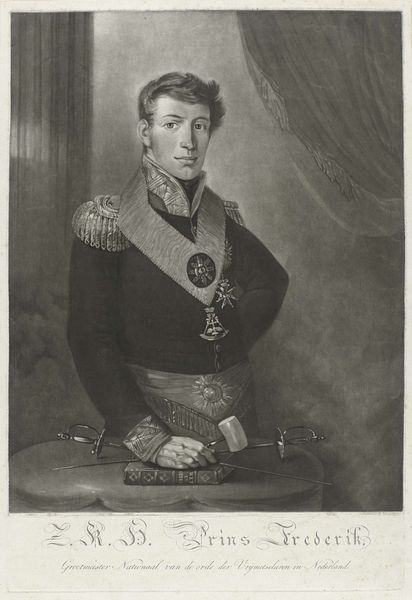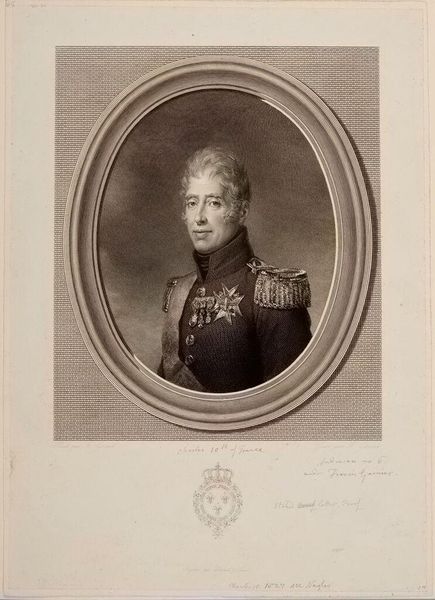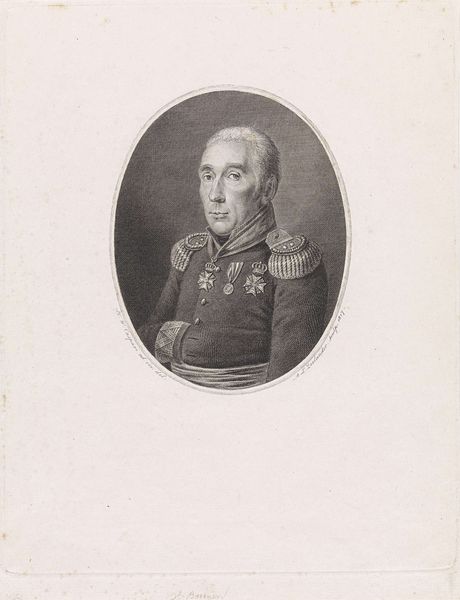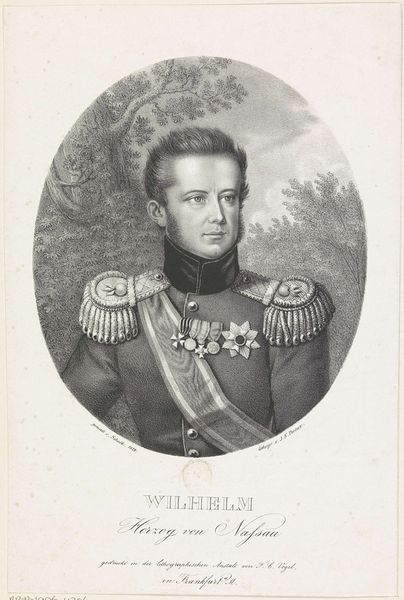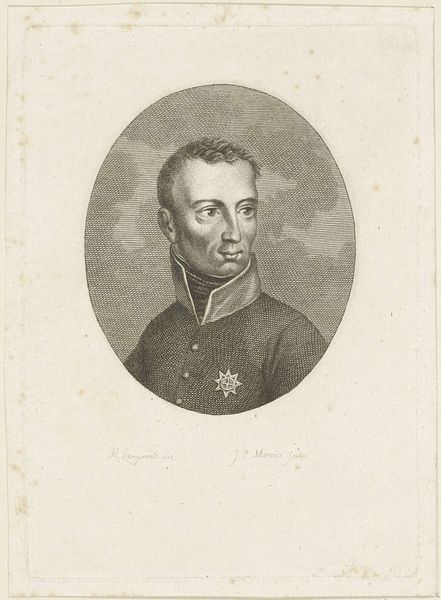
engraving
#
portrait
#
neoclacissism
#
pencil sketch
#
charcoal drawing
#
pencil drawing
#
19th century
#
portrait drawing
#
history-painting
#
engraving
Dimensions: height 395 mm, width 329 mm
Copyright: Rijks Museum: Open Domain
Editor: This is a portrait of Willem I Frederik, King of the Netherlands, made sometime between 1815 and 1830. The artwork by A. Champion is an engraving with what looks like charcoal drawing or a pencil sketch that has the neoclassical style. There's something incredibly regal, but also kind of severe about it. What strikes you most when you look at this piece? Curator: Oh, where to begin? Beyond the obvious stoicism demanded of royal portraiture, I see a man caught in the machinery of history. Look at the precise details in the engraving—the weight of expectation rendered in every line of his uniform, the heavy adornments that serve to build him up, all the neoclassical frame attempting to further establish his image with Greek mythological images. He almost appears like he is stuck in history, can you sense this? Editor: Definitely. It's like he's trapped in that very ornate frame, both literally and figuratively! He can’t be himself; instead, he’s performing the role that's been assigned to him by history and society. The King looks so melancholic and stoic like a soldier unwilling to partake in war, perhaps he sees that his decisions impact his people but his will is limited by traditions, society, his counselors. Curator: Precisely! And do you notice how the neoclassical style, so popular at the time, further emphasizes this sense of prescribed order and grandeur? It's not just about depicting a king; it's about crafting an image of unwavering authority. It really comes across that in the quest to communicate authority and power, it leaves no space for humanity, just position. I find that terribly sad, because I bet he wanted to be seen differently. Editor: It's fascinating how an image intended to project power can also reveal such vulnerability. Thanks to this chat I learned a new and compassionate way to observe royal paintings and see their subjects' hidden human feelings and concerns.
Comments
No comments
Be the first to comment and join the conversation on the ultimate creative platform.

